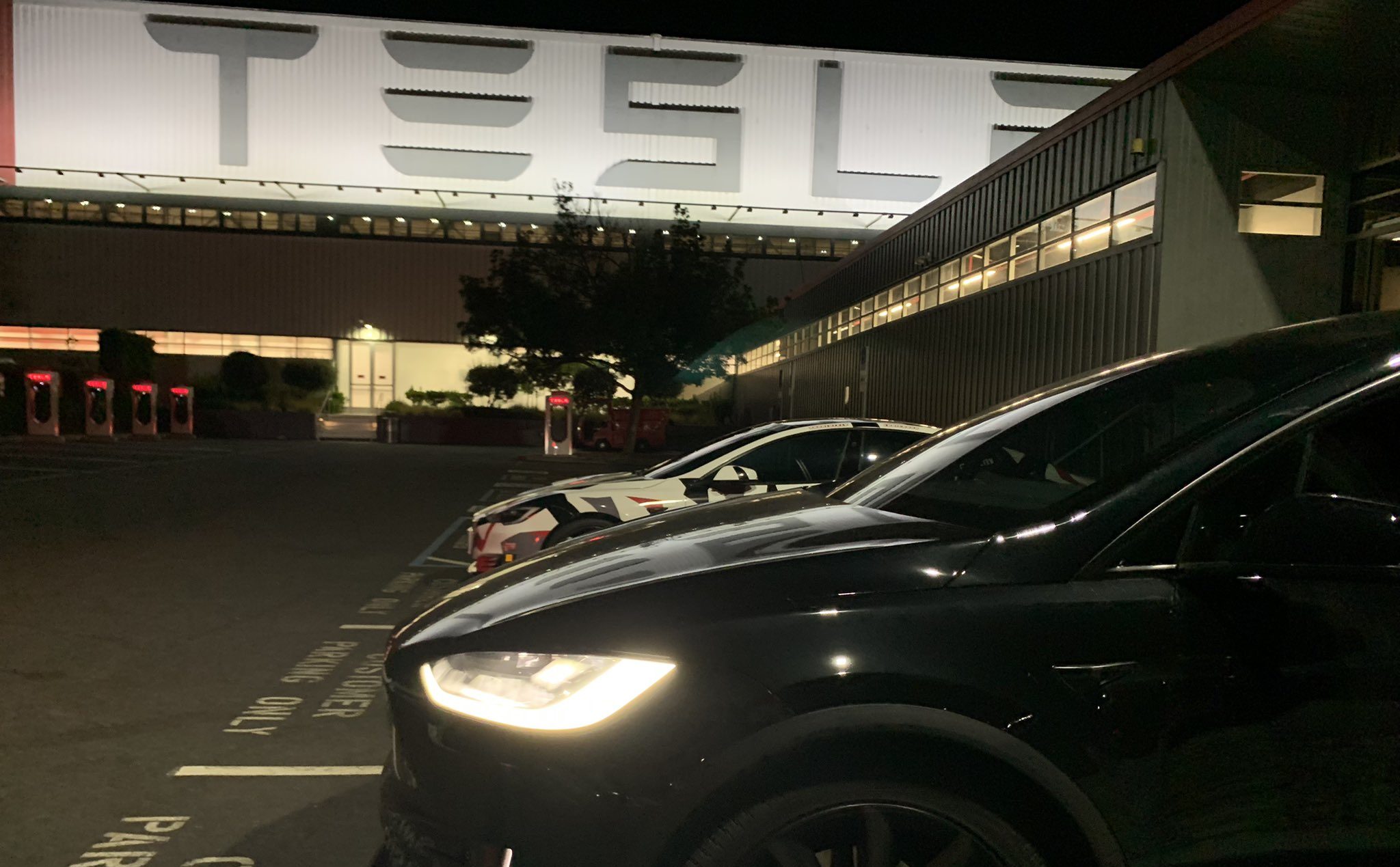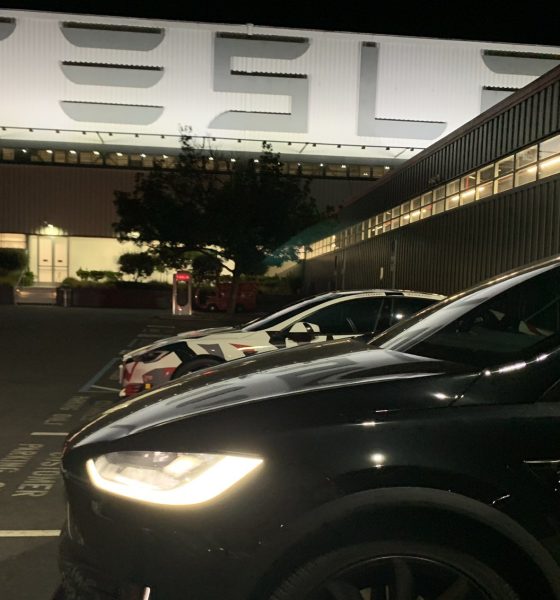

Investor's Corner
Tesla stock: Morgan Stanley pumps the brakes and lowers PT ahead of earnings
Analysts at Morgan Stanley pumped the brakes on Tesla stock by lowering its price target ahead of the automaker’s Earnings Call late this week.
Tesla shares are down 15 percent so far this year. Over the past year, shares are up 66 percent, but moving into 2024, some bulls are remaining cautious.
Morgan Stanley is one of them. In a note to investors released on Monday, analysts at the firm noted there are several factors that could spell trouble for global demand, including increased competition, pricing instability, and slowing demand for EVs.
Tesla will report Earnings on Wednesday. The company reached its 1.8 million unit delivery goal in 2023. It also dominated EV deliveries in the United States and Europe and was toward the top of the list in China. It launched the Cybertruck, a new Model 3 design, and has plenty of other catalysts moving into 2024. However, an ever-changing landscape, more competition, and other factors have Morgan Stanley proceeding with increased caution for the year.
In a note from analysts at the firm, they wrote about the potential risks for the stock this year:
“Global EV momentum is stalling. The market is over-supplied vs. demand. We anticipate Tesla’s 2024 outlook to be cautious on volume and profitability…Tough sledding for EVs but we remain OW on AI and robotics optionality.”
Adam Jonas listed several risk factors for the stock in the note, which include price cuts, weakening or expiration of EV incentives, excess capacity in China, residual value risks, and fleets cutting EV concentration.
Price Cuts
Tesla is still working on pricing stability, which improved greatly throughout 2023 but still offered some concern for investors. Less expensive EVs equate to increased adoption, but it also puts pressure on margins and profitability for the company.
Tesla has already cut prices in China and Europe this year, which is concerning from Morgan Stanley’s standpoint:
“Tesla has already announced price cuts in China and Europe that matched or exceeded our prior expectations of price reductions for the full year 2024. The German Tesla price cuts came merely days after Tesla announced production cuts at Giga Berlin related to Red Sea shipping issues. Lower production is usually positive for prices. This suggests the European EV situation is changing quite rapidly.”
Expiration/Weakening of EV Incentives
In the U.S. especially, Tesla is adjusting the narratives that surround some of its vehicles and their eligibility for EV tax credits. Two Model 3 configurations lost the tax credit, and as it is one of the best-selling EVs in Tesla’s lineup, it is not a positive, although the car is still affordable.
Morgan Stanley is also skeptical about the future of the IRA, stating it looks to be “increasingly uncertain.”
Some consumers are in need of these incentives to purchase the vehicle, and even if they are not a necessity, they are a benefit. It could sway many consumers in the direction of other vehicles. It is important to note that Volkswagen, BMW, Audi, and Ford also lost tax credit eligibility on some of their EVs.
Excess Capacity in China
Morgan Stanley said its Chinese team noted sales cannibalization, increased battery capacity and inventory, and the expiration of “certain local stimulus measures” as reasons Tesla may feel the heat.
Residual Value Risks
Price cuts from OEMs have pressured EV residuals, and dealerships are less bullish on electric cars than ever. Jonas writes that residual value volatility “hurts the value proposition for consumers and creates uncertainty around leasing partners who don’t want to hold this risk.” This includes Tesla.
Tesla’s leasing penetration is in the low single digits globally, Morgan Stanley notes.
Fleets Cutting EVs
Hertz made a drastic announcement earlier this month, stating it would backtrack its massive commitment to EVs as it did not properly account for the cost of damages. One-third of its EV fleet is being sold off, and a portion of the proceeds will go back into combustion engine vehicles.
Other companies are doing this as well on a smaller scale. Fleets offer a few advantages, including a large boost to orders for EV makers. Hertz planned to buy 100,000 Teslas, for example.
They also give drivers an opportunity to drive EVs before buying. While this will still be available, it will be less widespread.
Price Target Downgrade
Morgan Stanley moved its price target to $345 from $380.
I’d love to hear from you! If you have any comments, concerns, or questions, please email me at joey@teslarati.com. You can also reach me on Twitter @KlenderJoey, or if you have news tips, you can email us at tips@teslarati.com.

Investor's Corner
Tesla stock closes at all-time high on heels of Robotaxi progress

Tesla stock (NASDAQ: TSLA) closed at an all-time high on Tuesday, jumping over 3 percent during the day and finishing at $489.88.
The price beats the previous record close, which was $479.86.
Shares have had a crazy year, dipping more than 40 percent from the start of the year. The stock then started to recover once again around late April, when its price started to climb back up from the low $200 level.
This week, Tesla started to climb toward its highest levels ever, as it was revealed on Sunday that the company was testing driverless Robotaxis in Austin. The spike in value pushed the company’s valuation to $1.63 trillion.
Tesla Robotaxi goes driverless as Musk confirms Safety Monitor removal testing
It is the seventh-most valuable company on the market currently, trailing Nvidia, Apple, Alphabet (Google), Microsoft, Amazon, and Meta.
Shares closed up $14.57 today, up over 3 percent.
The stock has gone through a lot this year, as previously mentioned. Shares tumbled in Q1 due to CEO Elon Musk’s involvement with the Department of Government Efficiency (DOGE), which pulled his attention away from his companies and left a major overhang on their valuations.
However, things started to rebound halfway through the year, and as the government started to phase out the $7,500 tax credit, demand spiked as consumers tried to take advantage of it.
Q3 deliveries were the highest in company history, and Tesla responded to the loss of the tax credit with the launch of the Model 3 and Model Y Standard.
Additionally, analysts have announced high expectations this week for the company on Wall Street as Robotaxi continues to be the focus. With autonomy within Tesla’s sights, things are moving in the direction of Robotaxi being a major catalyst for growth on the Street in the coming year.
Elon Musk
Tesla needs to come through on this one Robotaxi metric, analyst says
“We think the key focus from here will be how fast Tesla can scale driverless operations (including if Tesla’s approach to software/hardware allows it to scale significantly faster than competitors, as the company has argued), and on profitability.”

Tesla needs to come through on this one Robotaxi metric, Mark Delaney of Goldman Sachs says.
Tesla is in the process of rolling out its Robotaxi platform to areas outside of Austin and the California Bay Area. It has plans to launch in five additional cities, including Houston, Dallas, Miami, Las Vegas, and Phoenix.
However, the company’s expansion is not what the focus needs to be, according to Delaney. It’s the speed of deployment.
The analyst said:
“We think the key focus from here will be how fast Tesla can scale driverless operations (including if Tesla’s approach to software/hardware allows it to scale significantly faster than competitors, as the company has argued), and on profitability.”
Profitability will come as the Robotaxi fleet expands. Making that money will be dependent on when Tesla can initiate rides in more areas, giving more customers access to the program.
There are some additional things that the company needs to make happen ahead of the major Robotaxi expansion, one of those things is launching driverless rides in Austin, the first city in which it launched the program.
This week, Tesla started testing driverless Robotaxi rides in Austin, as two different Model Y units were spotted with no occupants, a huge step in the company’s plans for the ride-sharing platform.
Tesla Robotaxi goes driverless as Musk confirms Safety Monitor removal testing
CEO Elon Musk has been hoping to remove Safety Monitors from Robotaxis in Austin for several months, first mentioning the plan to have them out by the end of 2025 in September. He confirmed on Sunday that Tesla had officially removed vehicle occupants and started testing truly unsupervised rides.
Although Safety Monitors in Austin have been sitting in the passenger’s seat, they have still had the ability to override things in case of an emergency. After all, the ultimate goal was safety and avoiding any accidents or injuries.
Goldman Sachs reiterated its ‘Neutral’ rating and its $400 price target. Delaney said, “Tesla is making progress with its autonomous technology,” and recent developments make it evident that this is true.
Investor's Corner
Tesla gets bold Robotaxi prediction from Wall Street firm
Last week, Andrew Percoco took over Tesla analysis for Morgan Stanley from Adam Jonas, who covered the stock for years. Percoco seems to be less optimistic and bullish on Tesla shares, while still being fair and balanced in his analysis.

Tesla (NASDAQ: TSLA) received a bold Robotaxi prediction from Morgan Stanley, which anticipates a dramatic increase in the size of the company’s autonomous ride-hailing suite in the coming years.
Last week, Andrew Percoco took over Tesla analysis for Morgan Stanley from Adam Jonas, who covered the stock for years. Percoco seems to be less optimistic and bullish on Tesla shares, while still being fair and balanced in his analysis.
Percoco dug into the Robotaxi fleet and its expansion in the coming years in his latest note, released on Tuesday. The firm expects Tesla to increase the Robotaxi fleet size to 1,000 vehicles in 2026. However, that’s small-scale compared to what they expect from Tesla in a decade.
Tesla expands Robotaxi app access once again, this time on a global scale
By 2035, Morgan Stanley believes there will be one million Robotaxis on the road across multiple cities, a major jump and a considerable fleet size. We assume this means the fleet of vehicles Tesla will operate internally, and not including passenger-owned vehicles that could be added through software updates.
He also listed three specific catalysts that investors should pay attention to, as these will represent the company being on track to achieve its Robotaxi dreams:
- Opening Robotaxi to the public without a Safety Monitor. Timing is unclear, but it appears that Tesla is getting closer by the day.
- Improvement in safety metrics without the Safety Monitor. Tesla’s ability to improve its safety metrics as it scales miles driven without the Safety Monitor is imperative as it looks to scale in new states and cities in 2026.
- Cybercab start of production, targeted for April 2026. Tesla’s Cybercab is a purpose-built vehicle (no steering wheel or pedals, only two seats) that is expected to be produced through its state-of-the-art unboxed manufacturing process, offering further cost reductions and thus accelerating adoption over time.
Robotaxi stands to be one of Tesla’s most significant revenue contributors, especially as the company plans to continue expanding its ride-hailing service across the world in the coming years.
Its current deployment strategy is controlled and conservative to avoid any drastic and potentially program-ruining incidents.
So far, the program, which is active in Austin and the California Bay Area, has been widely successful.








